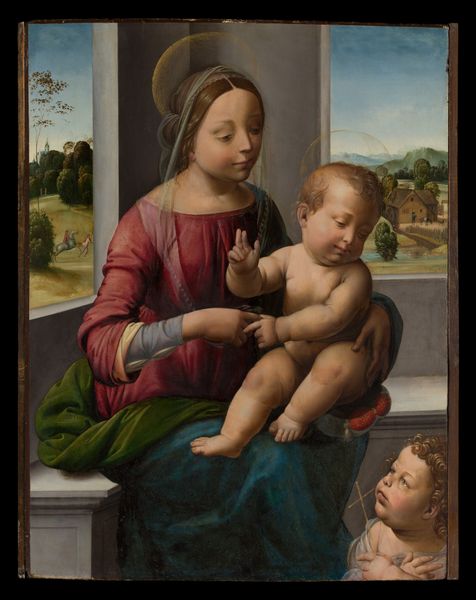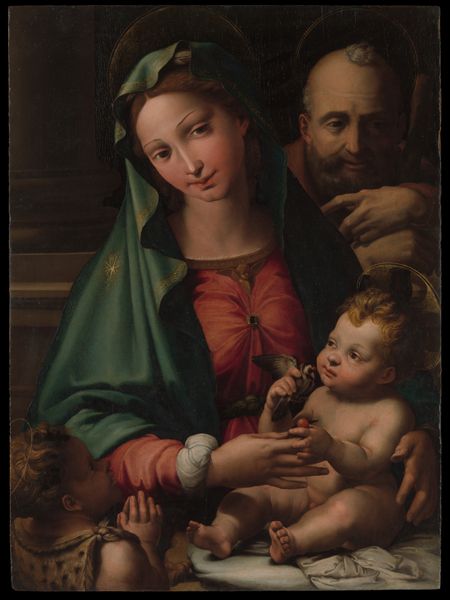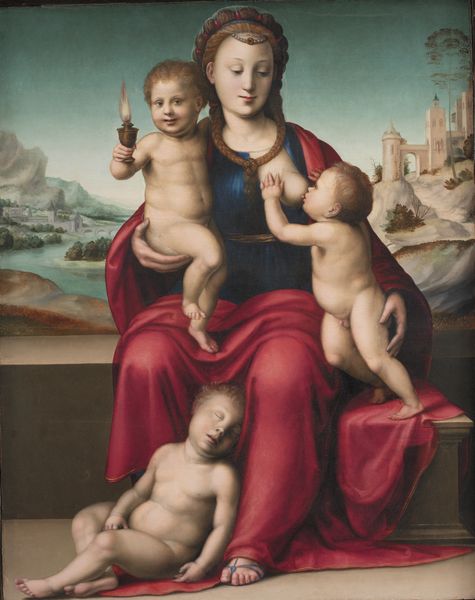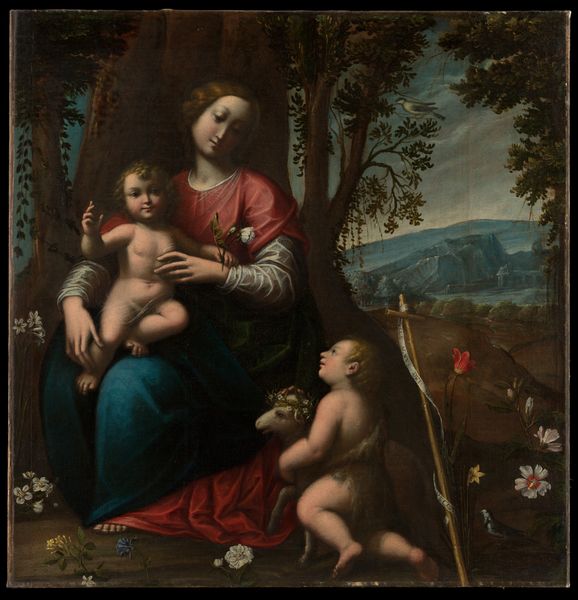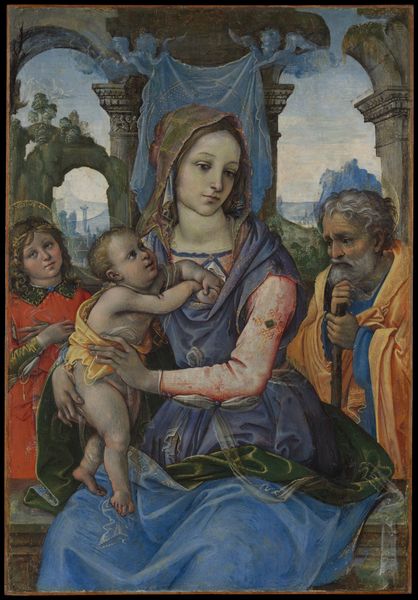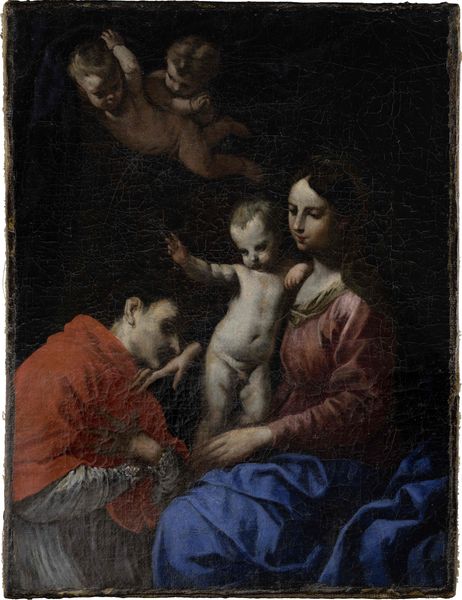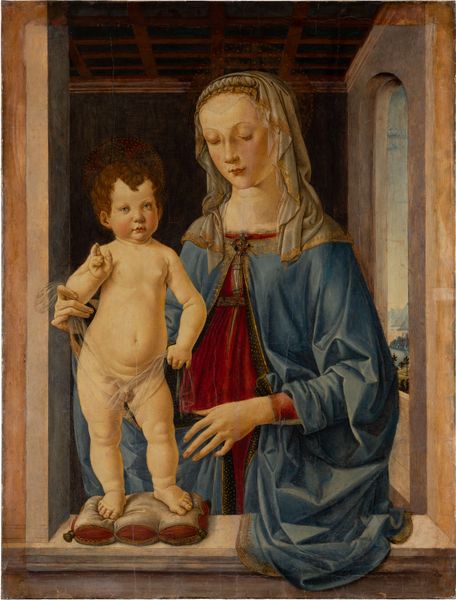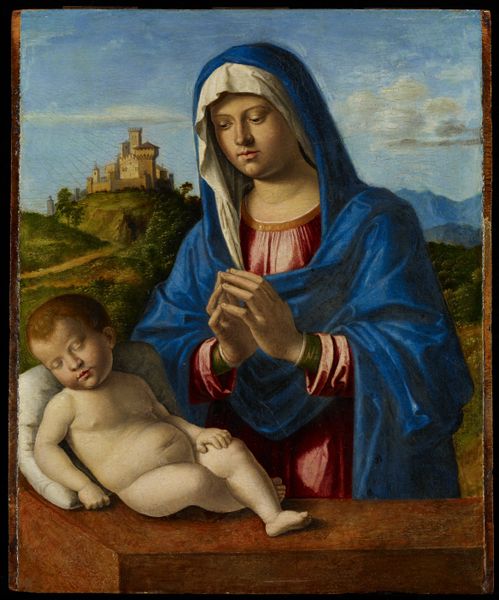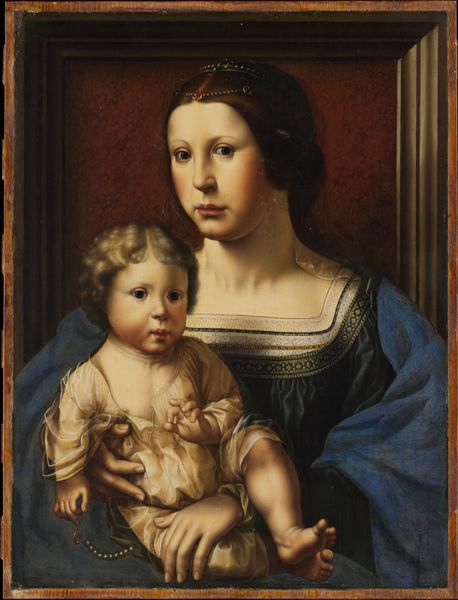
painting, oil-paint
#
allegory
#
baroque
#
painting
#
oil-paint
#
figuration
#
11_renaissance
#
history-painting
#
academic-art
#
italian-renaissance
Dimensions: 47 1/8 x 41 1/2 in. (119.7 x 105.4 cm)
Copyright: Public Domain
Curator: Cesare Dandini painted "Charity" sometime between 1625 and 1635. It's currently part of the Metropolitan Museum of Art's collection. Editor: My immediate impression is one of soft opulence. The rosy flesh tones against the rich blue and red fabrics feel both comforting and, I don’t know, materially generous. Curator: Absolutely. Dandini, working within the Florentine Baroque style, uses the traditional iconography of Charity – a woman nursing children – to evoke themes of compassion and abundance, particularly in response to the social inequities of the era. This composition makes a direct link between the ideals of feminine virtue and social responsibility. Editor: And note the use of oil paint, applied so smoothly as to nearly conceal its own materiality. It speaks to a sophisticated understanding of the medium, aimed at depicting not just forms, but a kind of idealized smoothness associated with wealth and privilege. Look at that ceramic vessel near the base with the flickering flames. Curator: I see what you mean about idealized smoothness, yet it's worth remembering that artistic production itself had a material reality. The sourcing of pigments, the labour in the studio – these all connect "Charity" to broader networks of commerce and craft within 17th-century Italy. Dandini worked within the Medici court. We can consider how gender dynamics operated in artistic workshops through pieces like this. Editor: Precisely! This wasn't created in a vacuum. Who were the assistants preparing the paints? Where did Dandini source his lapis lazuli for that intense blue? Those details, though often invisible in art historical narratives, were critical. Curator: And even that seeming "timelessness" is, itself, a construct. The Baroque aesthetic—which this exemplifies so well—is often leveraged to enforce the idea of these being the proper or acceptable characteristics or virtues. Editor: It’s a constructed virtue, visualized through highly skilled craftmanship. Thinking about these artistic choices allows us to reframe this vision of "Charity" through a materialist lens, recognizing the labor, resources, and social contexts that shaped its creation and reception. Curator: Reflecting on this, "Charity" offers not just a pretty picture of an abstract concept but a tangible artifact that reflects and shapes the complex, and at times fraught, interplay of material, labour and identity within early modern Europe. Editor: A lens which brings awareness that we're constantly interacting with artifice—constructed and reified realities. Thanks to pieces like "Charity", we have endless routes to examine them more honestly and comprehensively.
Comments
No comments
Be the first to comment and join the conversation on the ultimate creative platform.
